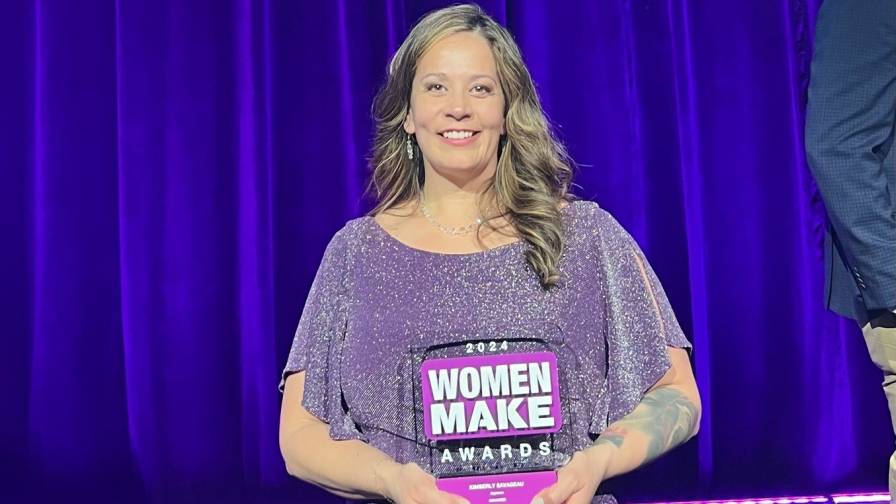Webinar: Surefire Seed Treatment Strategies
With the use of soybean seed treatments (as well as corn and other row crops) in the ag retail market expected to continue on its upward course for 2013, it’s only natural that the recent CropLife Media Group Webinar focused on this profitable niche for retailers.
“Seed Treatment Strategies: Research, Product And Equipment Update,” sponsored by Agrilead, Becker Underwood and Valent USA Corp., featured the latest information on soybean seed treatments including presentations from Iowa State University’s Dr. Alison Robertson, Associate Professor/Extension Field Crops Pathologist, and Alan Gaul, Seed Conditioning Specialist.
Soybean Seedling Disease: Knowing The Players
Robertson stressed the importance of stand establishment throughout her presentation. “Particularly with soybeans, growers are planting less and less seed into the field and they need every one of those seeds to germinate and grow into a healthy, productive plant,” she said.
A survey of Midwest-based Certified Crop Advisors looked at the various stand establishment problems encountered in the last five years, and found crusting and seedling disease/seed rot were the two most common causes. Furthermore, the survey found disease itself accounted for 20% of total stand establishment problems, with Pythium Spp., of which there are many varieties, as well as Phytophthora sojae, Rhizoctonia solani and Fusarium spp., being the most common.
Cool, wet planting conditions were often the primary cause of the disease problems, said Robertson. As for defeating seedling blight, she recommended planting into optimal seed bed conditions, following local planting date recommendations and considering a seed treatment in fields with a history of disease or if they are cold and wet at planting.
Another study looked at yield effects, discovering that fungicide seed treatments often have a varying effect, depending both on their location when planted and the variety of Pythium that is encountered. For example, the study found an 8.3 bu./A increase over “naked beans” when using Syngenta’s CruiserMaxx treatment in Crawfordsville, IA. Meanwhile, in Nevada, IA, beans treated with CruiserMaxx produced a 5.2 bu./A increase.
Effective Downstream Seed Treatment Practices
Gaul’s segment focused on the various commercial automated seed treating systems that are becoming more common at retailers of all sizes.
“The equipment has been evolving,” said Gaul. “There’s a trend at the larger retailers toward both batch treaters that can apply higher application rates and do layers, and on-demand mixing of the chemicals to where you can have multiple raw products available that are literally mixed on the fly.”
Gaul said typical downstream system components in ag retail today are portable and deployed seasonally. They include round bins for bulk seed storage, portable conveyors for handling, overhead holding bins, chemical tanks and metering system, a secondary mixing system (typically rotary drum) and electrical controls for automation.
The goal of the seed-treating process, according to Gaul, is three-fold: to control seed and soil-borne pathogens, improve plantability and appearance and provide proper application rate and uniform coverage.
Technology And Product Update
Representatives from each sponsor presented information on their company’s latest products. First, Russ Berndt, legumes and northern crop product manager at Becker Underwood, discussed the benefits of VAULT HP, which features patented BioStacked Technology for better plant health and yield potential, as well as its many colorants and polymers that offer enhanced plantability.
“We’re bringing to market technologies that both increase yields and also provide improved seed enhancements for plantability and advantages with the treaters,” said Berndt.
Neil Badenhop, sales manager at Valent USA Corp., highlighted several different offerings, including the super-systemic INOVATE fungicide and insecticide combination treatment, which features three active ingredients, and the NipsIt INSIDE insecticide and NipsIt SUITE seed protectant product lines in soybeans.
Valent products in the pipeline include a new active ingredient in Ethaboxam (for metalaxyl-resistant P. sojae), as well as Rizolex (active on Rhizoctonia), which Badenhop anticipates will receive registration in early 2013.
Finally, Jeff Ochampaugh, business development manager at Agrilead Inc., presented information on the company’s NOVO seed care prescription management system. The system has the ability to develop local, custom prescriptions for growers prior to the treating season, and features NOVO’s touch screen interface and a Size Indexed Rate Adjustment (SIRA) feature, which “develops a prescription for delivering the same level of active ingredient on every seed, regardless of seed size.”
“As the job of treating seed becomes more precise, there are several important considerations to keep in mind as retailers think about investing in advanced seed care equipment,” advised Ochampaugh. “Compatibility with existing equipment, your freedom to operate as a retailer and whether it delivers value for your business and customers should all be kept top of mind.”






